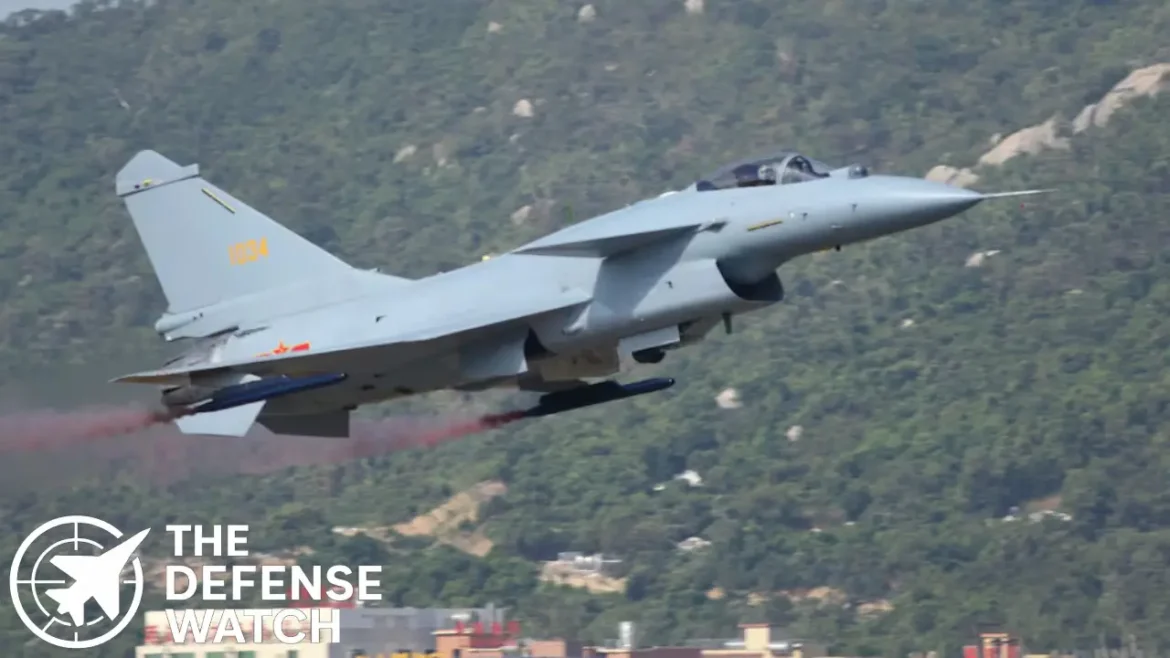Bangladesh Clears Path for Multirole Fighter Acquisition
Bangladesh’s caretaker government has provisionally approved a sweeping modernization of its air force, granting the Bangladesh Air Force (BAF) the green light to procure multirole combat aircraft, along with advanced surface-to-air missiles and long-range radars.
Although Air Chief Marshal Hasan Mahmood Khan has not publicly confirmed a model, industry and regional analysis suggest a strong tilt toward the Chinese J-10CE export variant, a 4.5-generation fighter already in service with Pakistan. Under the authorization, Bangladesh may acquire up to 20 jets by 2027, with total costs — including training, spares, infrastructure, and sustainment — estimated at around US $2.2 billion.
This decision comes amid growing urgency: Bangladesh’s current fighter fleet, composed largely of aging Chinese F-7s and a handful of Russian MiG-29s, has suffered from high maintenance demands and safety issues. One F-7 crashed into a Dhaka college campus earlier this year, claiming dozens of lives and underscoring the pressing need for fleet renewal.
Strategic Rationale Behind the Move
Reinforcing Air Sovereignty and Coastal Defense
Geographically positioned between India and the Bay of Bengal, Bangladesh’s air defense challenges are pronounced. A modern multirole fleet would give Dhaka enhanced capabilities to surveil, interdict, and enforce its airspace, particularly over maritime boundaries and in contested coastal corridors. The shift to more capable jets is aligned with the broader Forces Goal 2030 modernization roadmap.
Chinese Equipment Ecosystem and Existing Ties
Bangladesh already fields several Chinese-origin platforms — from light tanks to submarines — which suggests that interoperability, logistics synergies, and political alignment could favor a Chinese fighter choice. Moreover, previous diplomatic engagements, including during a visit by interim Chief Adviser Muhammad Yunus to Beijing, signaled mutual interest in stronger defense ties and arms trade cooperation.
Risks and Balancing Western Options
While the Chinese J-10CE remains the frontrunner, Bangladesh has reportedly explored Western alternatives, including attending Eurofighter Typhoon demonstration flights in Italy. However, aligning with Chinese systems carries diplomatic trade-offs: potential friction with the United States and Western suppliers, export control constraints, and reliance on China for long-term sustainment.
Publicly, Bangladesh’s Finance Adviser declined to comment when pressed on the $2.2 billion deal, underlining the sensitivity of the procurement in political and fiscal circles.
Technical Prospects and Integration Challenges
The J-10CE is believed to incorporate modern avionics such as active electronically scanned array (AESA) radar, digital flight control, and compatibility with beyond-visual-range missiles like the PL-15E. If fully integrated, it would constitute a qualitative leap over Bangladesh’s existing fleet of second- and third-generation jets.
However, successful deployment demands upgrades in BAF’s command, control, communications, computers, and intelligence (C4I) framework. Integration of datalinks, secure networks, and ground-based radar nodes will be critical for network-centric operations. Key infrastructure—bases, maintenance depots, hardened shelters, fuel systems—would also require modernization before new jets can deploy.
Regional Implications and Competitive Dynamics
Bangladesh’s move enters a dynamic South Asian airpower landscape. India’s air force fields advanced platforms like the Rafale, Su-30MKI, and indigenous Tejas Mk1A, maintaining qualitative edge in many domains. The acquisition of J-10CEs narrows the gap, particularly in radar and missile capabilities.
At the same time, neighboring countries and strategic watchers will assess this as part of China’s broader regional outreach. The introduction of relatively capable Chinese fighters into smaller air forces amplifies China’s defense posture beyond its borders, even if indirectly.
Outlook and Next Steps
With in-principle approval secured, the next phases hinge on a multiministerial committee led by the BAF to negotiate terms, finalize contracts, and choose between government-to-government (G2G) approaches or direct commercial deals.
If the timeline holds, training may begin in China as early as 2027, with first deliveries arriving in late 2027 or 2028. Full operational capability could be achieved by the early 2030s, catalyzing a new era for Bangladesh’s air defence posture.
Analysis & Context
This decision highlights a broader trend among mid-tier states in Asia: a shift toward 4th/4.5-generation multirole jets to replace aging interceptor fleets. The J-10CE particularly appeals to countries already using Chinese equipment, lowering integration and sustainment risk. That said, reliance on a single supplier presents vulnerability—both politically and logistically.
For Bangladesh, the stakes are high. Successful modernization could yield a credible deterrent in the Bay of Bengal region. But delays, cost overruns, or integration failures would risk strategic and fiscal backlash. Balancing ambition with execution discipline will be key.
FAQs
The J-10CE leverages Bangladesh’s existing Chinese equipment ecosystem, offers attractive financing, and presents fewer export control obstacles. Western jets can be costlier, diplomatically sensitive, and involve more complex technology transfer challenges.
The sum includes not only the aircraft but training, spares, infrastructure, maintenance, and lifetime support — spreading cost over 10 years makes it more manageable.
Yes — the current approval is in-principle. The final decision depends on multiministerial committee review, negotiations, and competitive offers.
If all goes smoothly, initial deliveries may come in 2027–28, with full operational capability by around 2030.
Moderately. While it won’t match India’s cutting-edge platforms, it strengthens Bangladesh’s deterrence and forces competitors to account for improved BAF capabilities.


4 comments
[…] and personnel—often multiply initial outlays several times over. In recent years, nations acquiring fifth-generation and late-block 4/5 fourth-generation fighters have seen rapidly rising long-term […]
[…] cost-competitiveness matters. A missile priced at ~€2 million may be acceptable for a nation acquiring high-end fighters and seeking maximum capability, but for less capable air-arms cost may push them toward cheaper […]
[…] 70/72 aircraft from the United States for approximately $8 billion, marking the island’s largest fighter acquisition in three decades. The new variant features the APG-83 AESA radar, advanced mission computers, […]
[…] with the previous agreement signed with Sweden, this new deal would in theory see Ukraine’s air force as the first operator of both the Dassault Rafale and Saab Gripen, which would quickly catapult the […]